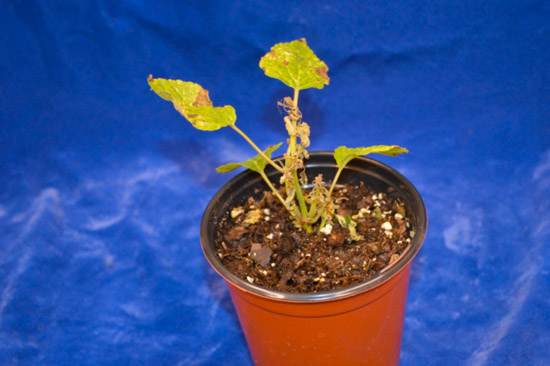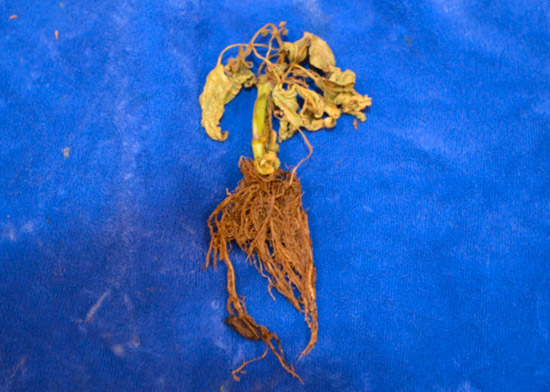Issue 3, May 13, 2013
Buying Healthy Plants
It is that time of the year when you head to your local garden shop to purchase plants for your landscape or garden. We would like to take this opportunity to stress how important it is for you to purchase healthy plants to help avoid plant problem frustration as the season progresses. Now this may seem like a silly topic, but some of the recent U of I Plant Clinic samples, have been those that have been recently purchased and found to be infected with disease.
When purchasing plants, a good rule of thumb, is to choose a plant with foliage that appears to be full and green. Avoid plants that are yellow in color, show signs of wilted leaves, or consist of spindly growth. These all could be symptoms of disease, stress, nutrient deficiency, or neglect. Small plants that have premature flowering can also be a sign of stress. It never hurts to be familiar with some of the common signs of disease or insect damage, so that you can carefully examine plants before purchasing, as it's never worth introducing a new pest or pathogen into your garden.
While the above-ground portion of the plant can give clues about plant health, it is also very, important to inspect the roots. Carefully pull out the plant from its container (provided it's not enormous) to check for excess soil moisture issues as well as minimal or excessive root growth. If the plant appears to have a minimal root system, this could lead to an increased risk of future plant transplant shock. If you observe a large mass of roots that have started growing around in circles or out of the bottom of pot, the plant is most likely root bound. Lastly, if a plant's root system appears to be small, brown, and rotted, this could be an indication of a root rot. Pythium root rot has been observed quite, frequently this spring, on various annuals.


The pictures above are of Salvia infected with Pythium root rot. The cool, wet weather present over the last few weeks has provided the perfect conditions for the infection of Pythium root rot. Pythium is a soil born, fungal-like organism that infects the roots of all plants. Symptoms of Pythium root rot include stunted growth, smaller than normal leaves, poor foliar color, dieback of stems, or sudden wilt or death of plants. The roots of infected plants may appear to have blackened root tips as well as a soft, dark rot of the outer, root layer. If you suspect that your plant's roots are infected with Pythium, gently, wash and inspect the roots. If the outer root layer easily slides off, with the inner root remaining, this could also be a sign of a Pythium root rot infection.
Unfortunately, there is no treatment for plants with a Pythium root rot infection and these plants should be discarded. If needed, an accurate diagnosis will help with management and will hopefully keep this root rot from spreading. Pythium can survive for years in soil, so the best defense is preventing it from entering your garden via diseased plant material, infected garden tools, or water source. (Stephanie Porter and Nicholas Prudhomme)